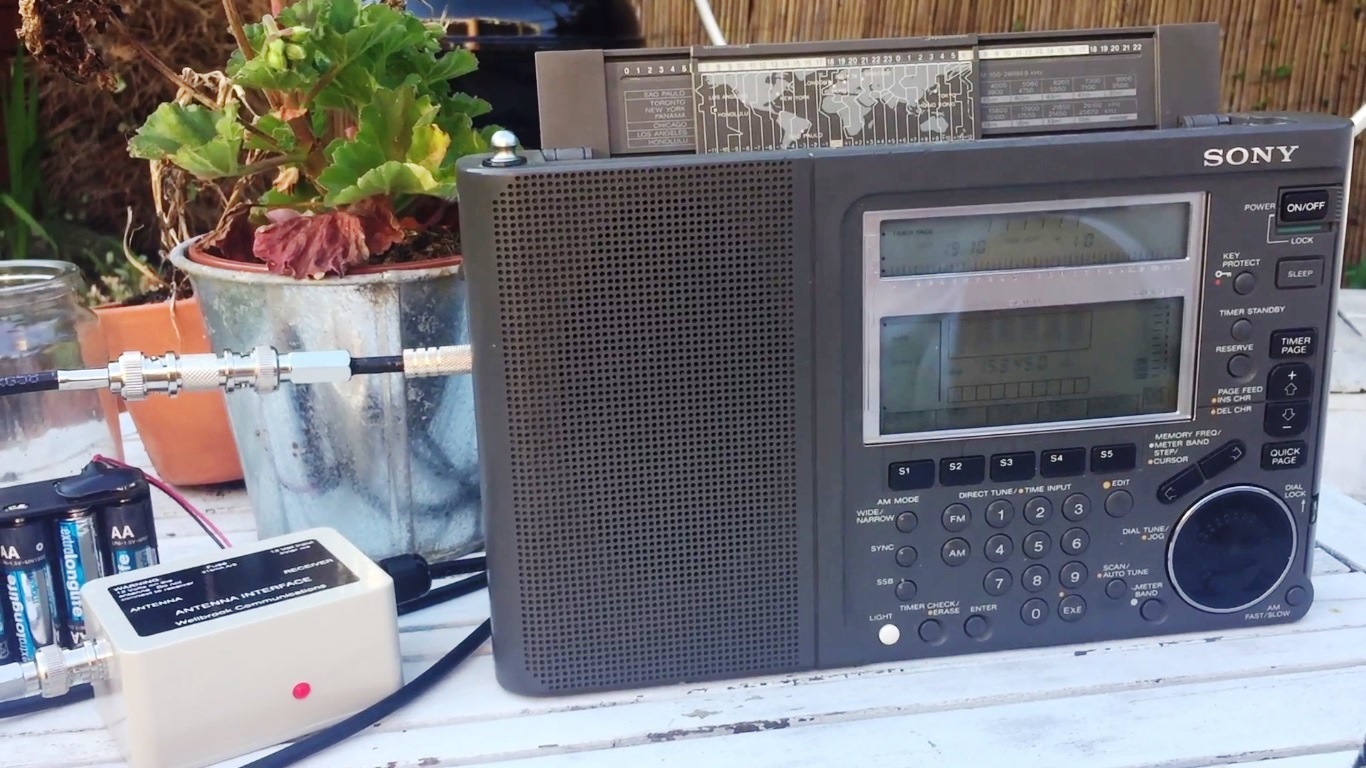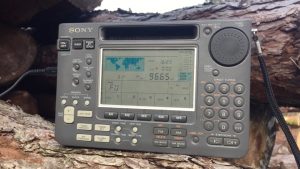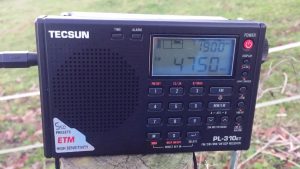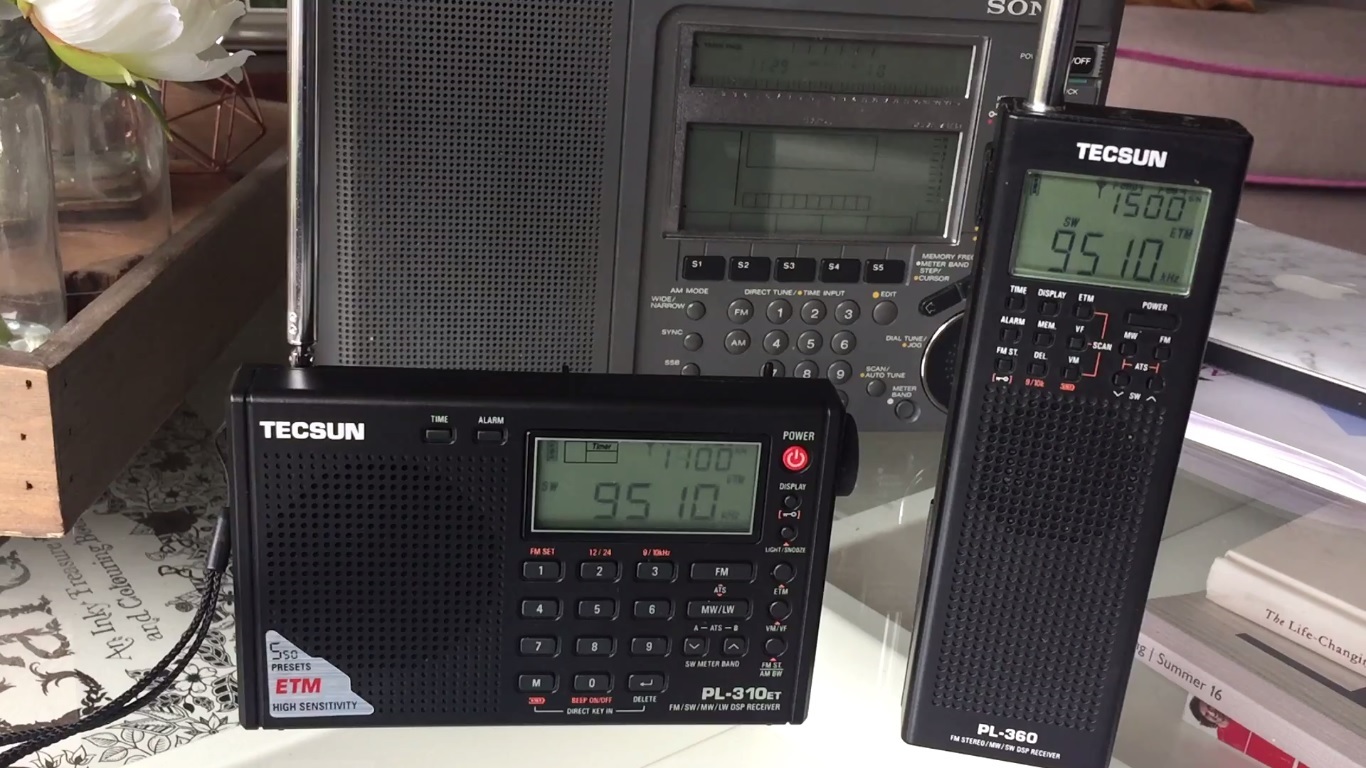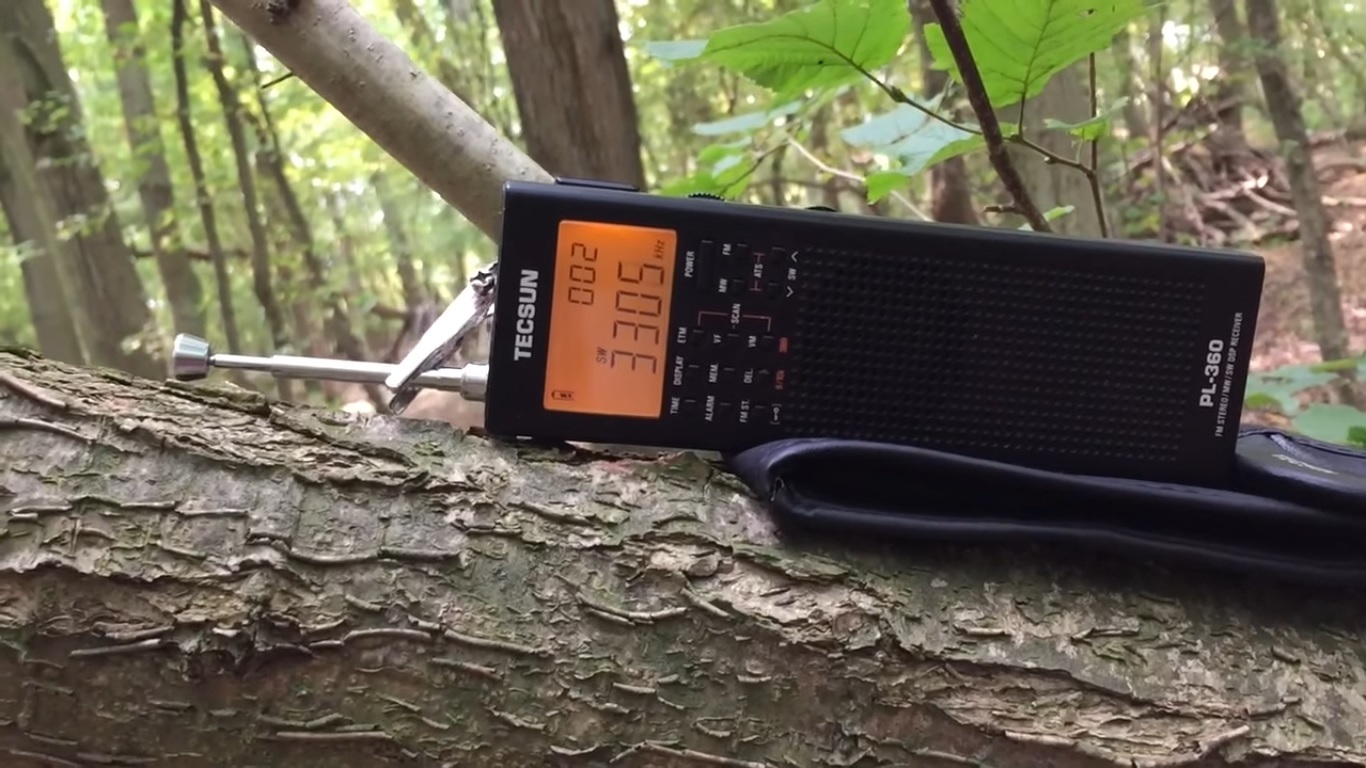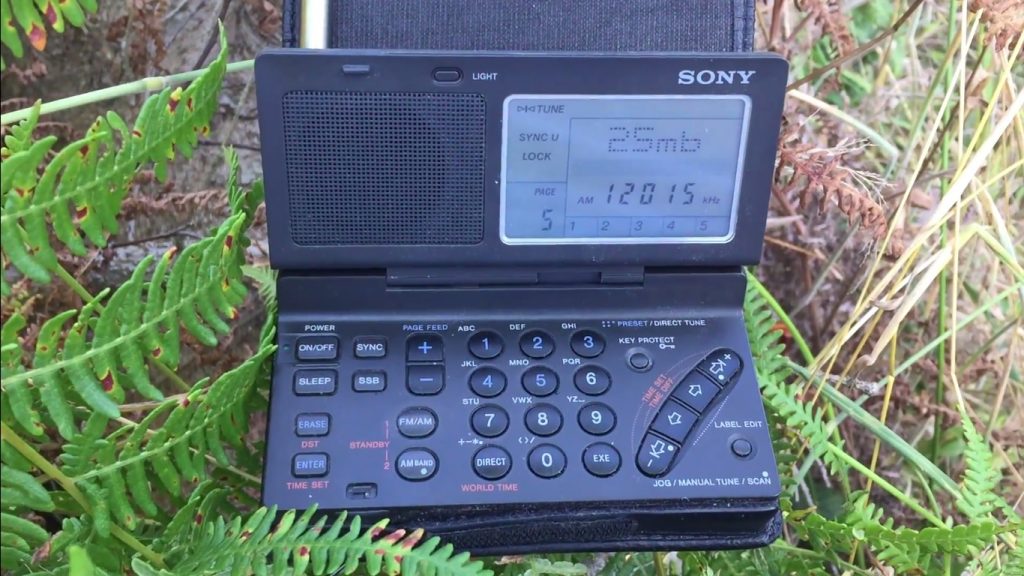Some of you might remember the extensive tests I conducted last August, comparing this great portable receiver against the model it was introduced to replace – and arguably one of the best-ever portables – the Sony ICF-2001D/ICF-2010. I conducted a back-to-back series of comparison tests at the very quiet wood in Oxfordshire I use for my DX’peditions, using the same antenna for both recievers – the excellent Wellbrook ALA1530 active loop. In total, I made fourteen reception videos comparing the ICF-2001D and ICF-SW77 and posted them to my Oxford Shortwave Log YouTube channel. Both receivers performed very well, delivering excellent reception on the Tropical Band and elsewhere on the shortwave spectrum, however, the ICF-2001D proved to be the clear winner, with what proved to be far superior synchronous detection.
But that wasn’t the end of the road for my ICF-SW77. It remains a very capable receiver (one of my all-time favourite portables) and one which I continue to use regularly. However, every now and then, it surprises me with something exceptional. Since conducting the tests against the ICF-2001D, the SW77 has brought in my best-ever indoor reception of Radio Verdad, Guatemala on 4054.8 kHz….and when I say best-ever, I really do mean it; the audio was significantly clearer than anything I had copied previously at home with the Elad. More recently, I copied Zambia NBC Radio 1 on 5915 kHz on a DX’pedition with a far superior signal to anything I’d previously heard, with any other reciever, including the ICF-2001D and the Elad FDM DUO. Some of this of course is down to short-term conditions of propagation, however, the SW77 continues to prove why it has such a loyal following and continues to command premium prices on eBay. Text links and embedded videos to both reception videos on Oxford Shortwave Log follow below:
- Radio Verdad 4054.8 kHz Guatemala, clearest indoor reception to-date
- Sony ICF-SW77: Zambia NBC Radio 1, 5915 kHz, Lusaka, best ever reception
Further to these recent catches, I promised some of my YouTube subscribers that I would conduct another, similar test with the ICF-SW77, but against it’s cheaper ‘sibling’ the ICF-SW55. A review at the time of the ICF-SW55’s introduction concluded that the price premium of the ICF-SW77 may not be justified since the performance of the two receivers was very similar, despite the SW55 lacking synchronous detection. As someone who has extensive experience with the SW55 out in the field – it was my mainstay DXpedition receiver for more than a year – I was just as interested as my subscribers in how these two vintage Sonys would measure up against each other. The lineage is all very obvious from their respective industrial designs, but the lack of Synchronous detection on the SW55 might have been the one element of functionality resulting in poorer performance, particularly in challenging band conditions and in the presence of adjacent channel QRM etc. To mix things up a little, I have also thrown the brilliant Tecsun PL-310ET into this test. Such a sensitive and selective receiver for less than £40, it has provided more surprises with regard to it’s performance than just about any other radio I’ve owned. How would the Tecsun compare to these two vintage, but high-end Sony portables? Stay tuned to find out! Two reception videos follow, using signals from ABC Northern Territories (4835 kHz) and Radio Mali (9350 kHz), with more to follow on Oxford Shortwave Log and a further posting on swling.com/blog. Thanks for watching/reading/listening.
- Sony ICF-SW77 vs ICF-SW55 vs Tecsun PL-310ET: ABC Northern Territories 4835 kHz
- Sony ICF-SW77 vs ICF-SW55 vs Tecsun PL-310ET: Radio Mali 9635 kHz, Bamako
Clint Gouveia is the author of this post and a regular contributor to the SWLing Post. Clint actively publishes videos of his shortwave radio excursions on his YouTube channel: Oxford Shortwave Log. Clint is based in Oxfordshire, England.

